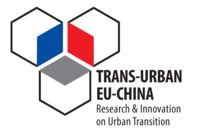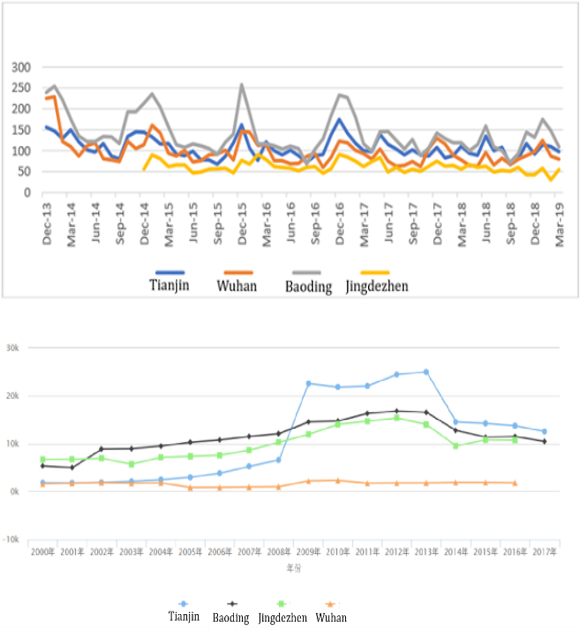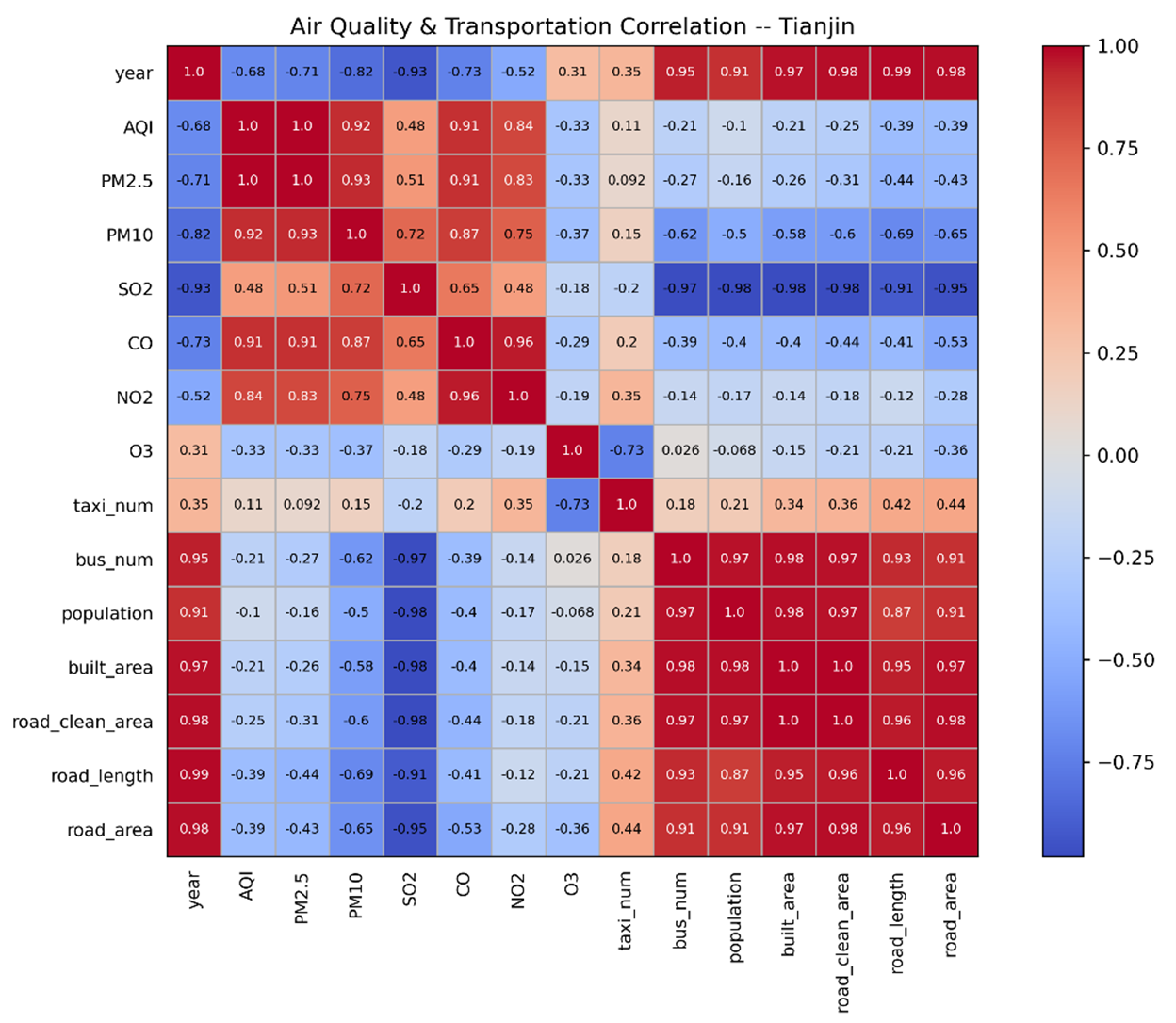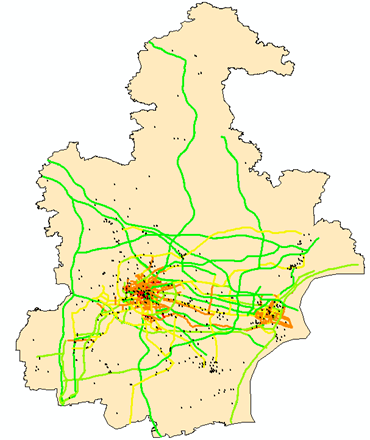
TRANS-URBAN-EU-CHINA
Transition towards urban sustainability through socially integrative cities in the EU and in China
Guidelines for detecting the impacting factors for air pollution and estimating costs for air pollution control
1. Purpose(s)
These guidelines provide a data-driven guidance to detect the impact factors of air pollution, to estimate the cost for air pollution control, and to predict future air pollution. The process reveals the correlations between environmental (air pollution, noise, climate change, etc), human mobility (transportation), and human activities (e.g., industry, infrastructure, businesses). The outcomes reveal the insights on factors to be taken care of in order to improve the air quality, the cost of air quality improvement as well as how to protect the environment more effectively and economically (Figure 1).
Methodologies used are data analysis (correlations), model building, Regression Analysis, Deep Learning through a Back Propagation Neural Network (BPNN), and the corresponding results are visualized (Figure 2).
Key Words: Air pollution correlations, Air Quality Index, Big Data Analysis, Neuronal Network for Air Quality Index prediction, cost model for air pollution improvements
2. Relevance and Impact
These guidelines
- for analysing the impact factors of air pollution,
- for estimating the cost of air pollution reduction,
- for predicting the air pollution at a city, district, and sub-district level
are a necessary foundation of evidence-based decision making by a city in respect to air pollution improvements.
The developed Big Data Analysis toolset has been successfully applied to the analysis of the air pollution causes in the four Chinese cities Tianjin, Wuhan, Jingdezhen, and Xiong’an.
The analytical processes and the associated results provide full evidence for the reasons of air pollution and could therefore have a significant impact in setting environmental protection policies, in particular by promoting the public transportation systems, rebalancing the industries in the city, improving the urban planning, and land usage plans. The decision on the investments in environmental protection will also benefit from this process and its results.
3. Strenghts
The data-driven approaches were developed based on Machine Learning and Artificial Intelligence methods. The models are trained based upon the real-world datasets including real time ones (traffic and air quality index, etc.) The models are based on established methodologies, i.e., procedures, data requirements, computation functions and parameters of air pollution in four living labs in China. Unlike the traditional approaches, the analytical process gathers data from different aspects including the industry infrastructure, human mobilities/activities, and points of interests attracting people. The analytical models indicate that in addition to the traffic (emission from automobiles), various industries and places full of people have big impacts on the environment. The models are flexible. Together with the cost model (for environment protection), the entire process can be utilized by government agencies of different cities to tackle their environmental problems accordingly.
Formal plans, with particular emphasis on active planning approaches, can provide a service for socially integrative cities. Through the broad discussion in the planning process and the integration of political will, they support the raising of awareness of the participating actors for the challenges in urban development. This, in combination with other land management instruments proves to be very effective. Formal plans can support the reduction of urban sprawl, balanced land conversion and access to urban land. They can also influence and strengthen (technical and social) innovation in cities and neighbourhoods and support appropriate institutional and urban finance mechanisms.
4. Weaknesses
The proposed approaches require comprehensive datasets to support the model building, analytics, predictions/classifications. The cost model for protecting environment needs the time series data regarding the investment in the environment protection over the years. While some data may be available via government’s web sites, other data are to be obtained only by spending more efforts. Life styles and businesses are different from place to place, the models and required datasets should be carefully adapted in order to provide a reasonable evidence base for decision making.
5. Good practice examples
In China, the above mentioned process has been applied to four urban living labs (Tianjin (map), Wuhan (map), Jingdezhen (map), and Xiong’an (map)). Based on the analytical results, various impacting factors for air pollution in cities are identified. Furthermore, according to the available data, the cost models for environment protection in Wuhan and Tianjin were created, which laid a solid foundation for decision making. Also, a Neural Network was trained with city Air Quality Index data for the prediction of the Air Quality Index in that city.
6. References
Mingyue Liu, Buyang Cao, Mengfan Chen, Otthein Herzog, Edna Pasher, Annemie Wyckmans, Zhiqiang Wu. Regression Analyses of Air Pollution and Transport based on Multiple Data Sources – A Decision Support Example for Socially Integrative City Planning. Accepted as book chapter to be published with MDPI in 2021.
WU Zhiqiang, CAO Buyang, Otthein HERZOG, Edna PASHER, Lee Shamir, Annemie WYCKMANS. Report with recommendations on Big Data Technologies, Analytics Solutions, and Analytics Results, and on the Creation of a Community of Communities to enable Holistic Sustainable Urban Planning. 2020, fileadmin/user_upload/tuec/files/Deliverables/TRANS-URBAN-EU-CHINA_D4.3_CIUC_ISCI.pdfDownload.
7. Author(s) of the article
Wu Zhiqiang, Cao Buyang, Otthein Herzog, Edna Pasher, and Lee Sharir


